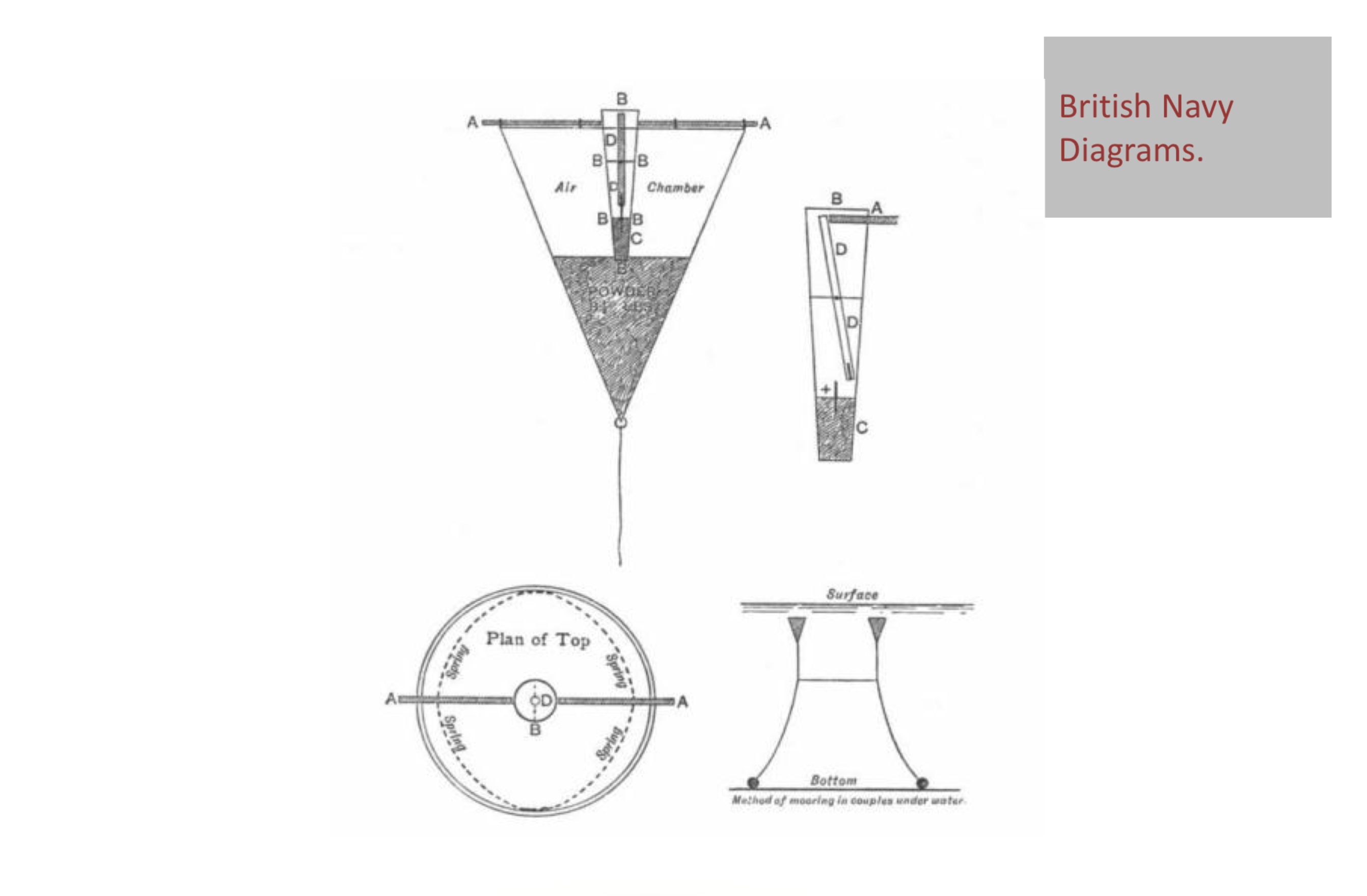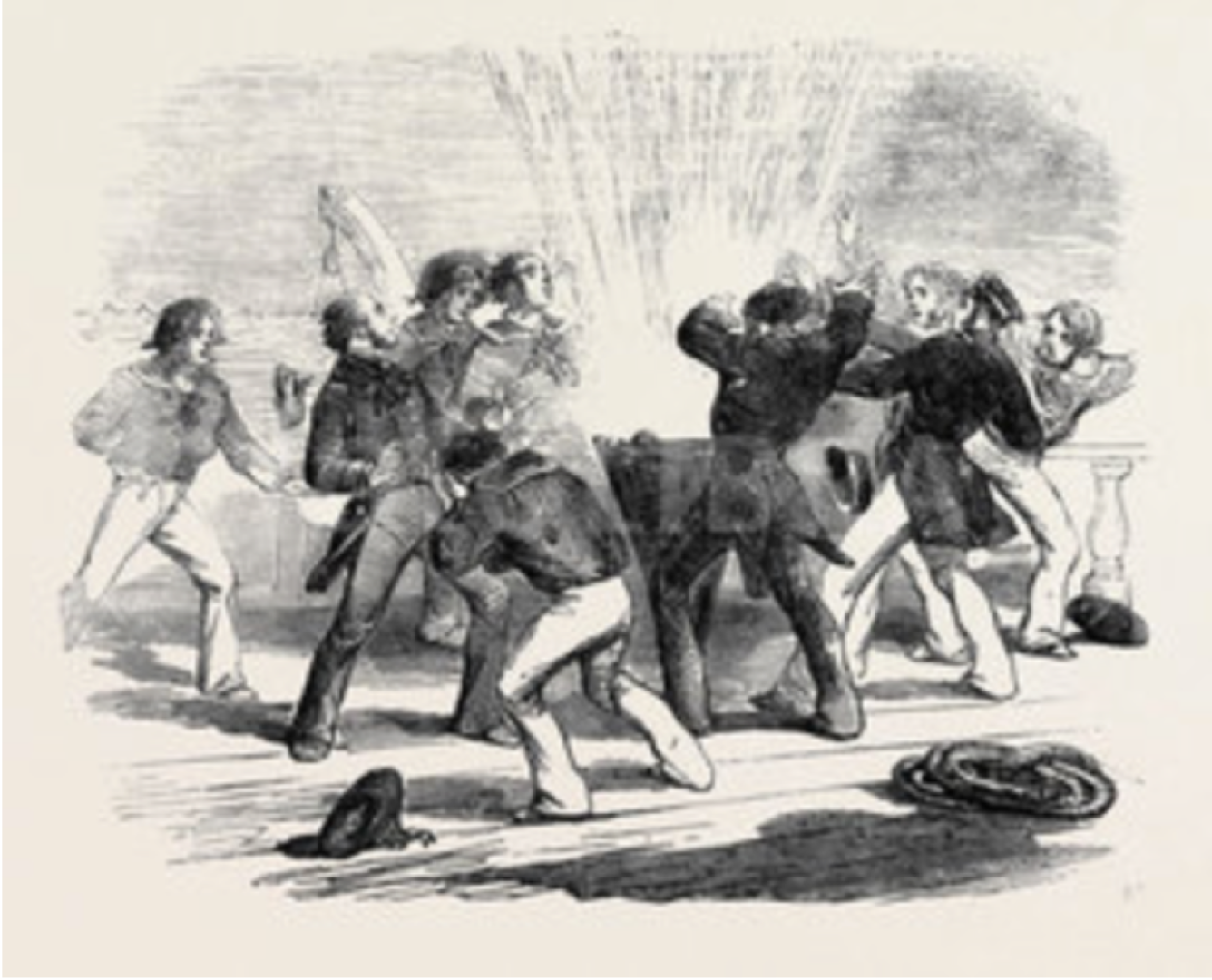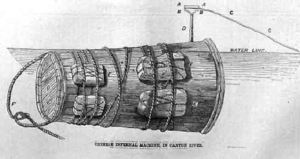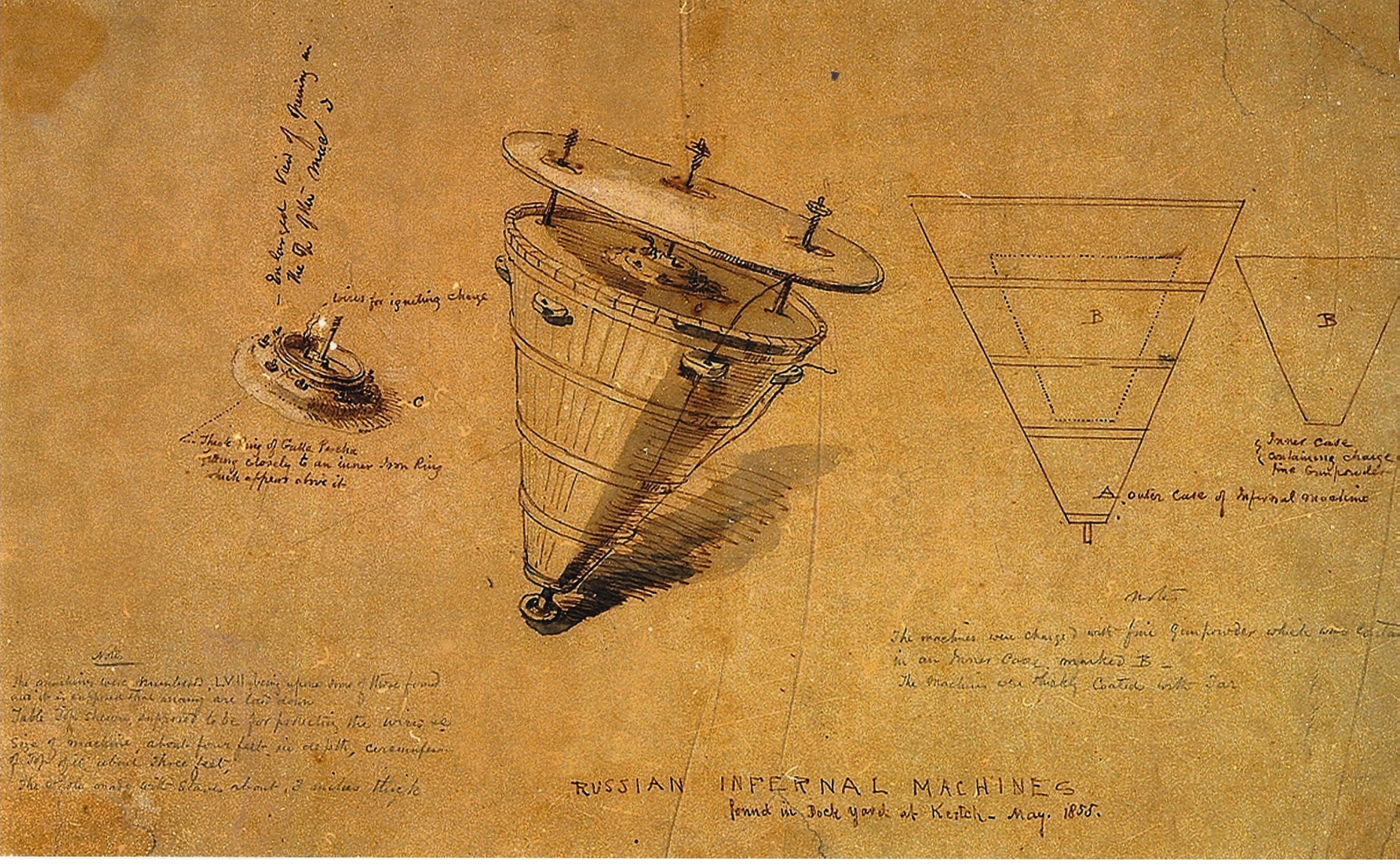I have blogged a few times earlier this year about Russian”stay behind” devices and here. In these earlier posts I also discussed some evidence that victim operated explosive devices were left behind when the Russians retreated from various places in the Crimean War of 1853 to 1856.
I have just found a contemporary translation of a French report from the Crimean War detailing massive command-wire electrically initiated devices from that conflict, intended to target advancing French and British forces. So it appears that the Russians were making significant use of both victim operated explosive devices as well as electrical command wire devices in this conflict. I don’t think that has been widely recognised by historians. Bearing in mind electrically initiated explosive devices were still something of a novelty in the 1850s, this really shows that the Russians had grasped the potential of the use in warfare of such devices and had planned and probably succeeded to detonate several simultaneously. Although the length of the wires are not specified, I think they were fired from a considerable distance, from a central command post. I find the obvious parallels with this concept in 1855 and the F-10 “stay behind” devices used in WW2 by Russia, 90 or so years apart, detailed in my earlier post very interesting, as well as early adoption of this initiation technology. The fact that the command wire ran such a distance , and partly under the sea, and that there were a number of them shows significant technical, tactical and operational capability with this early use of the technology.
The use of the devices was in the Battle for Malakoff in September 1855, which was in the main a French effort, but British forces played a key role in the Battle for the Redoubt. It was a bloody battle, with 20-30,000 deaths and 19 generals killed.
Here is an excerpt from the translation. Well done that sapper for cutting the command wire to the Malakoff redoubt with his axe!
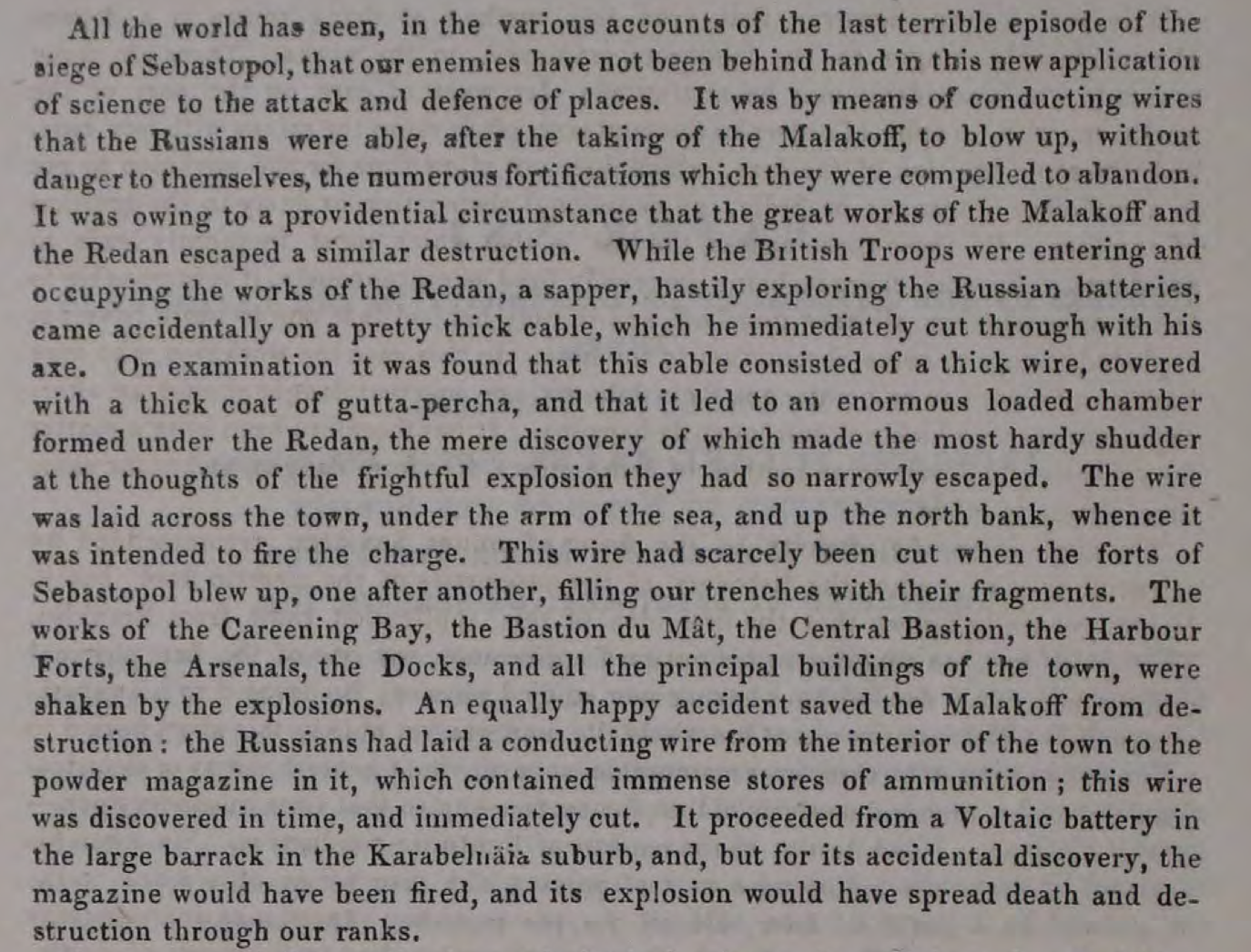
I have the tale of another quite remarkable electrically initiated device from the 19th Century, from some new research I’ve been doing, up my sleeve, this time an American device that nearly sank a battleship. Watch this space.
Follow up:
I continue to find further hints and comments about the use of command wire IEDs by the Russians during the siege of Sebastopol. For example this comment in a letter from General Charles Gordon discussing the aftermath in Sebastopol:
“We have traced voltaic wires to nearly every powder magazine in the place”
Also this photograph taken shortly after the battle. Although the image is not that clear the title is surprising. Here we have a Royal Engineer Search Team (REST) looking for an IED command wire, in 1855.
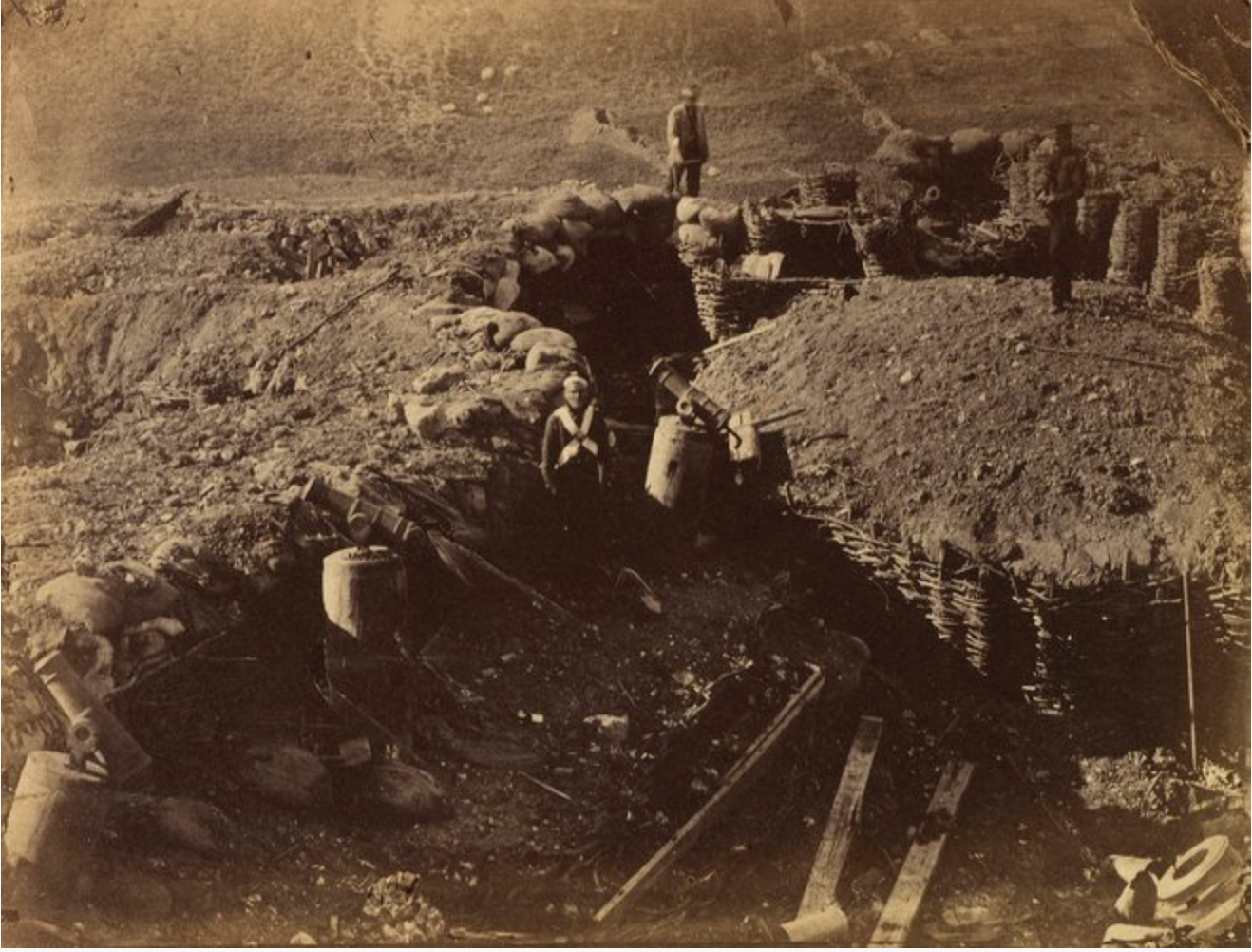
Carronade Battery, flanking the Ditch of the Redan. Sappers looking for Electric Wires communicating with the Powder Magazine

